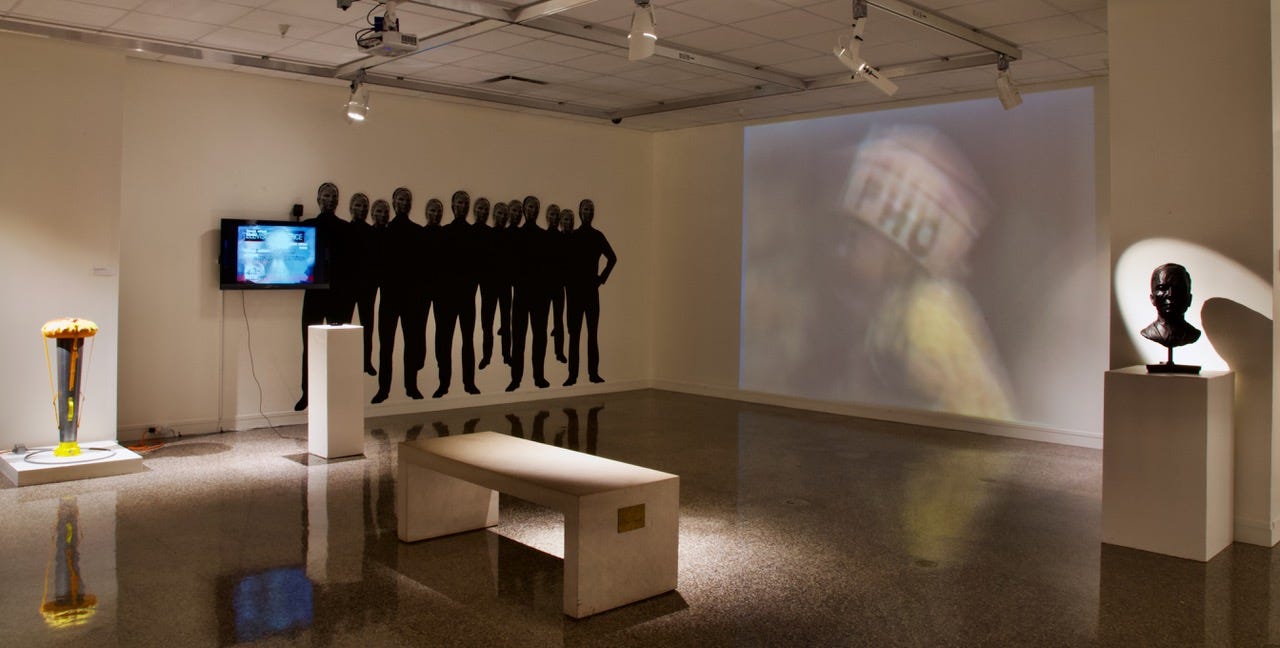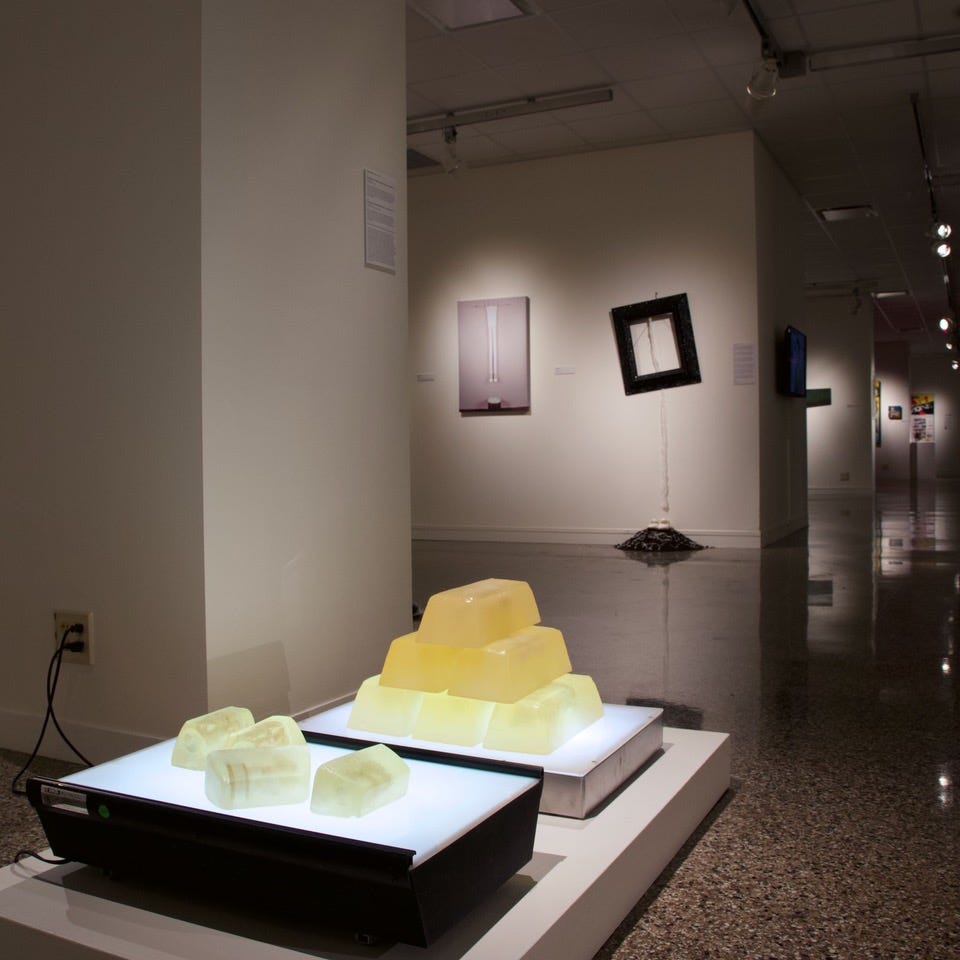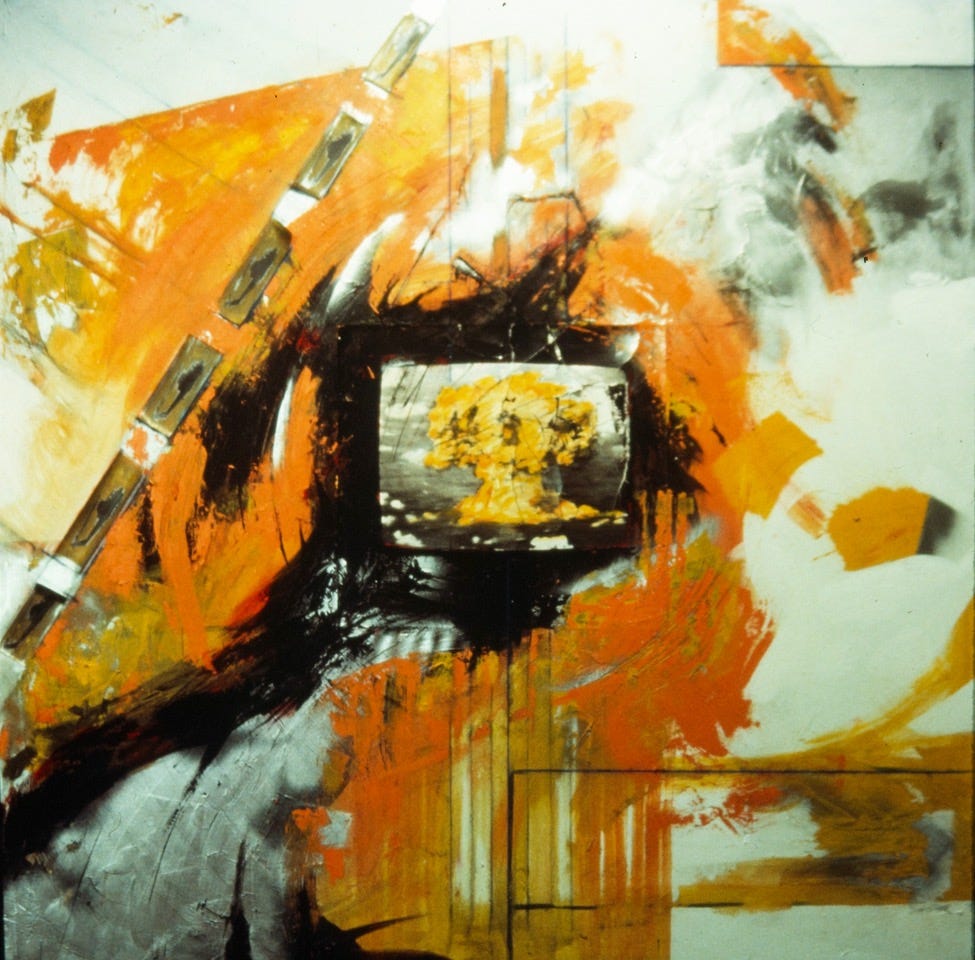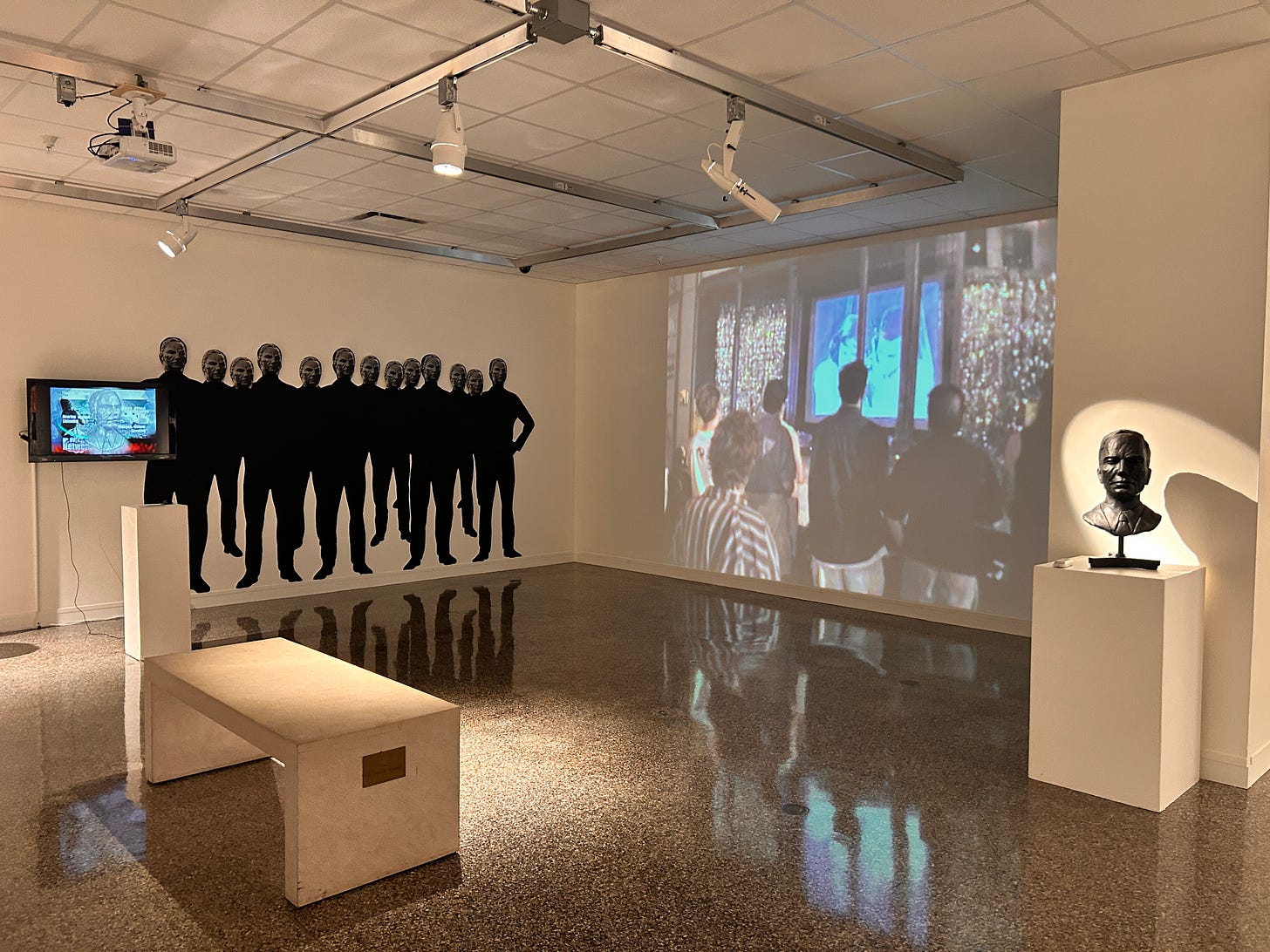Scott Snyder: A Key Figure in Rockford’s Analog Art Scene
Robert Fontaine Gallery represented artist, Scott Snyder, part of important exhibition at Rockford Art Museum
Weekly writing about the art market and the convergence of art and technology. By day, I’m a partner at the Robert Fontaine Gallery and a data science consultant. By night, I write Artxiom, ideas at the intersection of art, technology, and finance.
If you haven’t subscribed, join today by subscribing here:
Scott Snyder: A Key Figure in Rockford’s Analog Art Scene
Gallery represented artist, Scott Snyder, is a multifaceted artist, curator, and educator whose contributions to the Rockford art community have left a lasting impact, particularly during the vibrant 1990s art scene celebrated in the Rockford Art Museum’s exhibition "Analog: Rockford’s Decade of Creative Rebellion" (May 16 – September 28, 2025). As an artist featured in Analog, Snyder’s work and involvement reflect the raw, collaborative, and experimental spirit of Rockford’s pre-digital art world.
Snyder’s artistic journey is deeply rooted in the Midwest, with significant ties to Rockford’s creative landscape. His work spans diverse mediums, including painting, mixed media, and experimental forms, often engaging with socio-political themes and blending humor, narrative depth, and community-driven creativity. During the 1990s, Snyder was an active participant in Rockford’s burgeoning art scene, contributing to the unapologetic energy of spaces like the Skuggi Gallery and the Paul Harvey Oswald (PHO) collective.
The exhibition highlights Snyder’s role in this transformative decade, showcasing his work alongside that of over 20 other local artists. His contributions to the Skuggi Gallery, a hub for installations, performance art, painting, and sculpture, underscore his commitment to pushing artistic boundaries. Snyder’s involvement with PHO, a collective founded by Doug Connell and Kevin Cronin in 1992, further amplified his influence. PHO’s experimental video installations, which infused social and political narratives into public and gallery spaces, aligned with Snyder’s own interest in art as a medium for dialogue and reflection. He described the era as having a “communal energy,” where artists shared resources and ideas, fostering a collaborative environment that shaped Rockford’s cultural identity.
Curated by Rockford Art Museum’s Chief Curator, Carrie Johnson, Analog celebrates the 1990s as a time of “raw innocence” in Rockford’s art world, before the rise of digital media and social platforms. Snyder’s work in the show exemplifies this spirit, with pieces that capture the experimental ethos of that era and the tactile, hands-on approach to art-making. His contributions, alongside those of his peers, highlight the ingenuity and craftsmanship of the time. When asked about Analog, Carrie Johnson stated: “"ANALOG honors a pivotal era in Rockford’s cultural history, when a group of artists reshaped the local landscape through expression, collaboration, and unwavering commitment to their craft. This exhibition is a testament to their enduring impact on the Rockford community."
Scott Snyder’s participation in "Analog: Rockford’s Decade of Creative Rebellion" underscores his pivotal role in Rockford’s 1990s art scene. His multifaceted contributions as an artist, collaborator, and curator helped define a transformative period in the city’s cultural history. The exhibition, running through September 28, 2025, at the Rockford Art Museum, offers a window into Snyder’s creative output and the communal spirit of the era, celebrating a time when artists like him transformed Rockford into a fertile ground for unapologetic creativity.
Full Statement of Carrie Johnson, Executive Director/Chief Curator about “ANALOG: Rockford’s Decade of Creative Rebellion” :
I grew up in Rockford in the 1990s close enough to catch the city’s art pulse, but not quite in the middle of it yet. Café Esperanto was this unique little spot where you felt like you were stepping into another dimension—part café, part art gallery, part hangout for people who were way cooler and more creative than anyone I knew. I’d sit there with my coffee, still in high school, trying to take it all in. It was one of the first places where I saw that art didn’t have to be distant or formal—it could be alive, radical, and rooted in community.
ANALOG is a tribute to that time and to the people who made it matter. This exhibition brings together the work of over 20 local artists whose ideas and collaborations helped shape Rockford’s cultural identity in the 1990s.
While there were many dynamic galleries and artists throughout the area that made the art scene thrive, the artists in this show share not only a strong bond with one another but also deep ties to the Rockford Art Museum. These relationships, both personal and professional, contribute to the connections that underscores the exhibition. And it’s a reminder that even quiet revolutions can leave lasting marks.
Looking back, it’s clear to me now that those formative years—watching the artists who shaped the city—had a profound impact on my own journey. It was in those spaces, with those people, that I first realized what it meant to be part of something larger than yourself.
I would like to thank the Rockford Art Museum Board of Trustees for their support and encouragement. A special thank you to Sarah Axelson, Leslie Crow, and Hannah Garl for your dedication to not only the museum but to this exhibition. We are grateful for free admission and exhibition support from the Kjellstrom Family Foundation, Lisa and Mark Lindman and the Johnson Family Foundation.
And lastly, thank you to my friends and art heroes, Betsy Youngquist, Scott Long, Rick Zillhart, Matt Herbig, Lynn Fischer-Carlson, John Deill, Jim Julin, Mark Blassage, Kim VanLaeke, Scott Snyder, Doug Connell, Kevin Cronin, Holli Connell, Doc Slafkosky, and Jerry Kortman. Thank you for sharing your knowledge, passion, creativity and dedication to the Rockford Art Scene for all these years. I have truly enjoyed every moment you’ve shared (especially during install weeks) and will never forget the laughs shared and memories made.
Thanks for reading! Subscribe here to receive Artxiom in your inbox each week:











